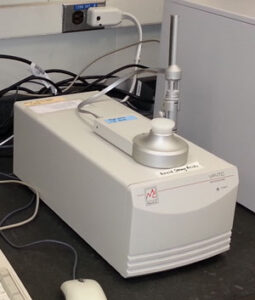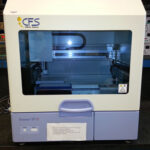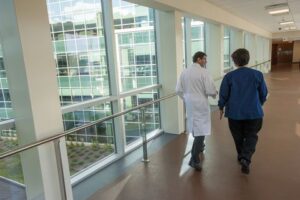
NMR Structural Biology & Biophysical Core Facility
Contacts
Instrumentation

400 MHz NMR Spectrometer
This is largely dedicated to walk-up access for chemists and for pulse sequence development. There are two probes for the system. The 400 MHz instrument is typically configured with the broad-band probe. A probe change takes around 2-4 hours. Inquire with the facility manager if a probe change is required.

500 MHz and 600 MHz NMR Spectrometers
These systems are largely dedicated to long-term biological samples, but may be used for short-term experiments as well. Typically the 500 and 600 MHz instruments are equipped with the HCN cold probes. Swapping a cold probe is a 2-3 day exercise. Thus, probe changes are typically not performed for short-term runs.

800 MHz NMR Spectrometer
This system is largely dedicated to long-term biological samples. The 800 MHz instrument is typically configured with the HCN cold probe. Swapping a cold probe for the room temperature probe takes approximately 4 hours. As the cold probe and room temperature probes are almost identical in design (except for the cold part) there is in general no reason to not use the cold probe except for certain 15N relaxation experiments.

Jasco J-715 Spectropolarimeter
This is a walk-up instrument or samples can be dropped off to be run for an additional fee. Training on the instrument is also available. CD spectroscopy measures the difference in absorbtion of left and right handed circularly polarized light. CD is a good technique to measure the secondary structure in proteins.

BioRad ProteOn XPR36 System
This is a walk-up instrument or samples can be dropped off to be run for an additional fee. Training on the instrument is also available. SPR is a sensitive spectroscopic tool for studying molecular interactions in a label-free state. This system in the core uses a chip with a 6 x 6 interaction array allowing for simultaneous analysis of up to six ligands and six analytes.

Microcal VP-Isothermal Titration Calorimeter (ITC)
This is a walk-up instrument or samples can be dropped off to be run for an additional fee. Training on the instrument is also available. ITC measures the heat released or absorbed when two or more molecules interact to determine the thermodynamic parameters of the interaction. The technique is quantitative and works with non-labelled samples.

Hitachi F-2500 Fluorescence Spectrophotometer
This is a walk-up instrument or samples can be dropped off to be run for an additional fee. Training on the instrument is also available. Proteins with TRP residues, will emit light at a longer wavelength (fluorescence) after they have absorbed light. The wavelength at which the maximum fluorescence occurs is dependent on the environment of the florophore and thus fluorescence spectroscopy is a useful technique to study structural changes of proteins due to conditions or through interactions with ligands.

PerkinElmer Cyclone Plus Phosphor Imager
This is an "open-access" instrument for trained users. The Clyclone Plus Phosphor Imager can perform quantitative high resolution filmless autoradiography for gene arrays, gels, thin layer chromatography, and tissue sections.

New Brunswick BioFlo/CelliGen 115 Fermenter/Bioreactor
This is a "open-access" instrument for trained users. Training for new users is available. The BioFlo/CelliGen 115 fermenter/bioreactor can precisely control pH, temperature, and can provide high levels of oxygenation for optimal growth. Multiple gas sources are available allowing for both aerobic and anaerobic growth conditions and virtually any type of cell can be grown: bacteria, spores, yeast, insect, plant, and mammalian.
Services and Rates

Protein Expression Services
This facility provides custom protein production of recombinant proteins suitable for biological assays and structural biology research. The facility can start with cloned proteins or assist in the cloning process to ensure that appropriate sequences, vectors and strains are being used. Services include bacterial protein expression, protein purification, wheat germ cell free expression, and protein characterization.

Consultation
A free consultation with the facility manager or other staff member can be scheduled to discuss how NMR, CD, ITC, SPR, fluorescence spectroscopy, or are protein production services can be used in your research projects.

Drop Off Services
The facility manager can setup and run experiments for untrained users for NMR, CD, SPR, ITC, and protein experiments.
Campus Address
The Gregory P. Mullen Facility
UConn Health Center
LSB028 (NMR)
L-2044 (Biophysical Core)
Mailing Address
263 Farmington Avenue, MC 6022
Farmington CT 06032-6022